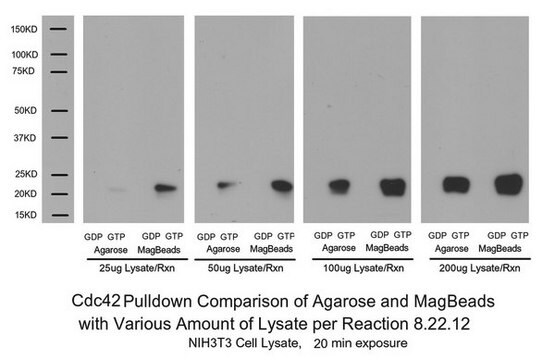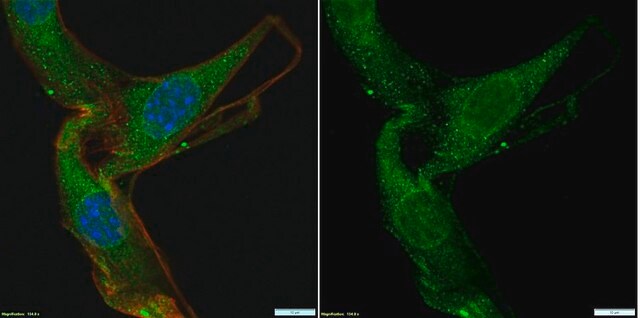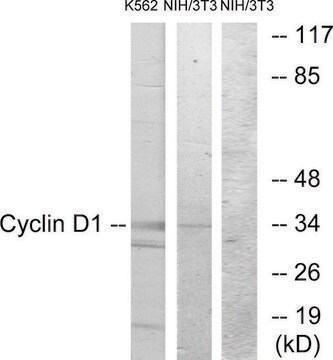ABN1653
Anti-Dysbindin
from rabbit, purified by affinity chromatography
Synonym(s):
Biogenesis of lysosome-related organelles complex 1 subunit 8, BLOC-1 subunit 8, Dysbindin-1, Dystrobrevin-binding protein 1, Hermansky-Pudlak syndrome 7 protein, HPS7 protein
About This Item
Recommended Products
biological source
rabbit
Quality Level
antibody form
affinity isolated antibody
antibody product type
primary antibodies
clone
polyclonal
purified by
affinity chromatography
species reactivity
human, mouse, rat
technique(s)
immunocytochemistry: suitable
immunofluorescence: suitable
immunohistochemistry: suitable (paraffin)
immunoprecipitation (IP): suitable
western blot: suitable
NCBI accession no.
UniProt accession no.
shipped in
ambient
target post-translational modification
unmodified
Gene Information
human ... DTNBP1(84062)
General description
Specificity
Immunogen
Application
Immunohistochemistry Analysis: A representative lot detected Dysbindin in Immunohistochemistry applications (Ito, H., et. al. (2010). Mol Psychiatry. 15(10):976-86).
Immunofluorescence Analysis: A 1,000 dilution from a representative lot detected Dysbindin in P8 mouse brain hippocampus tissue (Courtesy of Dr Koh-ichi Nagata at Aichi Human Service Center).
Immunoprecipitation Analysis: A representative lot detected Dysbindin in Immunoprecipitation applications (Ito, H., et. al. (2010). Mol Psychiatry. 15(10):976-86).
Immunocytochemistry Analysis: A representative lot detected Dysbindin in Immunocytochemistry applications (Yuan, Q., et. al. (2016). Biol Psychiatry. 80(4):312-22).
Western Blotting Analysis: A representative lot detected Dysbindin in Western Blotting applications (Lee, S.A., et. al. (2015). J Biol Chem. 290(11):7087-96).
Immunoprecipitation Analysis: A representative lot detected Dysbindin in Immunoprecipitation applications (Lee, S.A., et. al. (2015). J Biol Chem. 290(11):7087-96).
Western Blotting Analysis: A representative lot detected Dysbindin in Western Blotting applications (Ito, H., et. al. (2010). Mol Psychiatry. 15(10):976-86).
Immunocytochemistry Analysis: A representative lot detected Dysbindin in Immunocytochemistry applications (Ito, H., et. al. (2010). Mol Psychiatry. 15(10):976-86).
Neuroscience
Quality
Immunohistochemistry Analysis: A 1:250 dilution of this antibody detected Dysbindin in human cerebellum tissue.
Target description
Linkage
Physical form
Storage and Stability
Other Notes
Disclaimer
Not finding the right product?
Try our Product Selector Tool.
Storage Class Code
12 - Non Combustible Liquids
WGK
WGK 2
Flash Point(F)
Not applicable
Flash Point(C)
Not applicable
Certificates of Analysis (COA)
Search for Certificates of Analysis (COA) by entering the products Lot/Batch Number. Lot and Batch Numbers can be found on a product’s label following the words ‘Lot’ or ‘Batch’.
Already Own This Product?
Find documentation for the products that you have recently purchased in the Document Library.
Our team of scientists has experience in all areas of research including Life Science, Material Science, Chemical Synthesis, Chromatography, Analytical and many others.
Contact Technical Service






